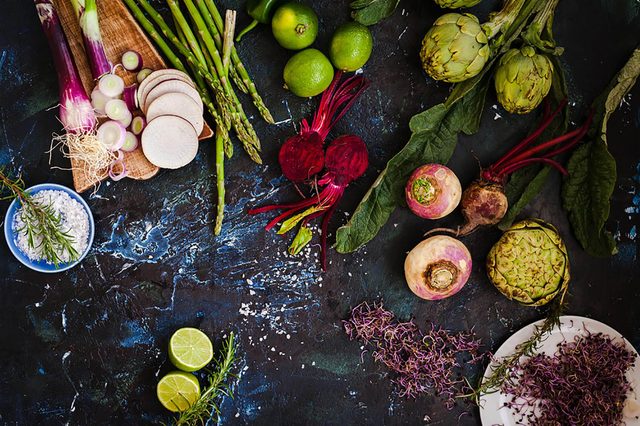
Buy produce that’s in season
Strawberries in January? Apples in June? Tomatoes in December? True, it can be expensive to buy fresh year-round, so make eating veggies more wallet-friendly by looking for signs that produce is in season in your area, and/or local. “Buying what’s in season is not only cheaper, but it also tastes better and can have more nutrients,” says registered dietitian Megan Casper. Here’s another money-saving tip: “Try checking out your local farmer’s market at the end of the day, when they tend to slash prices so they don’t have to haul perishables back home.” (Here are the in-season fruits to enjoy this summer.)

Try different cuts of meat
When buying meat, try choosing cuts that are less pricey, like chicken thighs instead of chicken breasts, or beef chuck roast instead of sirloin. “Cheaper cuts of meat, like pork shoulder or chuck, may be a bit tougher, but they can be slow-cooked to a juicy perfection,” Casper says. Leaner cuts have more meat per dollar than ones with a layer of fat that will be cut or cooked away. Plus, they are one of the best meats to eat.

Buy frozen fruits and vegetables
If fresh produce is still out of your budget, opt for frozen. “Not only do these last a while, but they are also typically cheaper than fresh produce and still provide many nutrients,” says registered dietitian Jennifer Kanikula. In fact, frozen fruits and vegetables may even be more nutritious than their fresh counterparts, as they are picked at peak ripeness and then immediately frozen, which preserves their nutrients. (Here are the other frozen foods nutritionists actually buy.)

Let the store circular guide you
Instead of planning meals and glancing to see if the ingredients you need are on sale, look at sales and coupons first to help you decide what to cook. “When planning your grocery list, save some room for flexible shopping in case something else is on sale instead of what you originally had planned,” says Kanikula. If you must plan in advance, check the store website or app for sales, so you can build a menu around them.

Take advantage of free trials
You don’t need to pay for an expensive membership for a good workout. Take advantage of free trials for online or at-home workout programs. This gives you a chance to try out different workouts before committing. “Many exercise facilities will offer either free or low-cost deals for new customers,” says Kanikula. “This is a great way to get exposure to the types of exercise you really enjoy and also exercise, for at least a little while, at a fraction of the cost.” Here are the Canadian fitness studios offering free classes during quarantine.

Meditate for free
Sure, all meditation is free, but for guidance, many of us turn to apps. After all, meditation is a great way to relieve stress and reduce the risk of depression, along with these other meditation benefits. The truth is you don’t need to pay to practice. Calm is offering free guided meditations on their app. “You can customize the soundtracks and the timings, so if you’re new, you can literally do a one-minute mediation each day to get started and build from there,” says healthy lifestyle advisor Kristen Battistelli. Here are some other ways to sneak meditation into your everyday life.
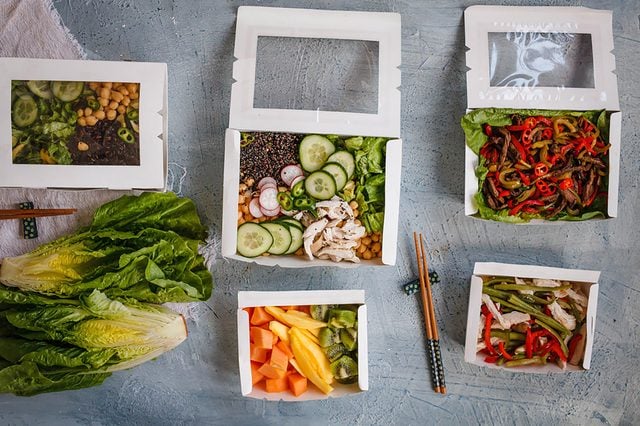
Use a meal plan delivery service instead of ordering takeout
If consider a meal plan delivery service to streamline healthy eating. “It comes out to roughly what you would pay for takeout, without considering the savings of decision fatigue, shopping, and meal planning,” says Battistelli. “And you won’t have any spoiling food in the fridge, which is a huge part of wasted grocery expense.” Here are some of the best Canadian food delivery services.
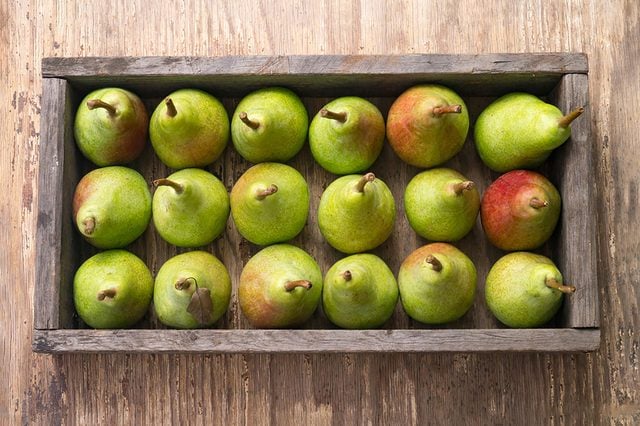
Buy favourite items in bulk
If you’re always tossing go-to grocery items, from orange juice to paper towels, in your cart, it’s time to go big. “Buy your favourite items by the case,” says nutritional chef and wellness counselor Melissa Eboli. “Many retailers will offer a 10 percent case discount, so if there’s a product you like and often use, here’s one way to reap financial benefits.”
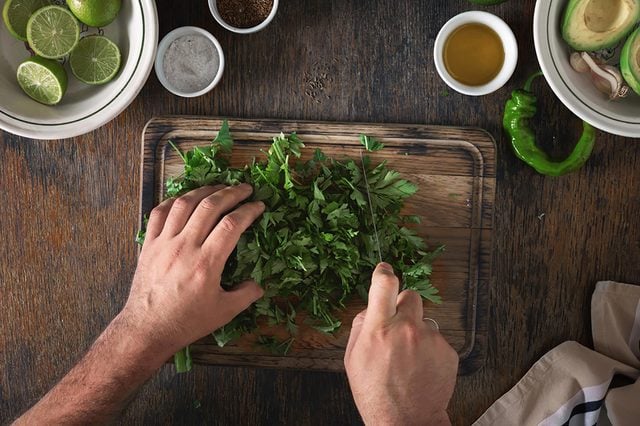
Do meal prep on weekends
Use your free time on weekends to set yourself up for home-cooked weeknight meals. That means washing and chopping vegetables, stewing meat, and preparing sauces or even entire meals. “It saves money and a lot of time on weekdays, and all you need to do is to pop your prepared meal into the microwave,” says wellness expert Aihui Ong. Advance meal prep prevents the need for pricey, fattening takeout, and also keeps you from preparing less healthful meals, like mac ‘n cheese, simply because they’re easy. Here’s how to meal prep like a pro.

Make meals without meat
Start incorporating Meatless Mondays into your menu. Not only is it healthier to go meat-free one night a week, but it’s cheaper and can even be more satiating. “Studies show that when people ate a bean burger versus eating a beef burger in a blind taste test, they felt fuller after the bean option,” says ER physician Darria Gillespie, MD. “Try a veggie main (such as a bean or veggie burger), or just go meat free with a tofu stir-fry or pasta with pesto and garbanzo beans.” Try one of these plant-based dinner recipes.
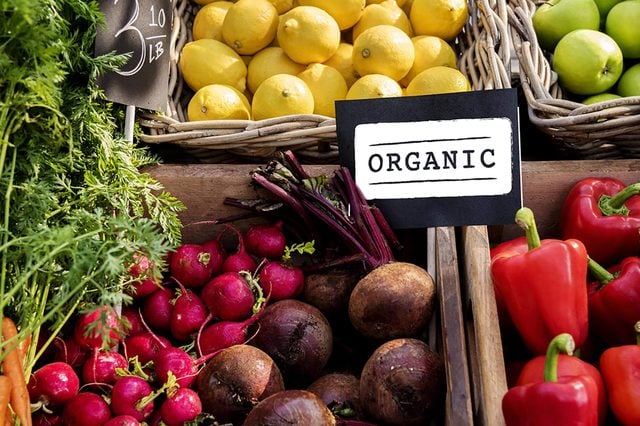
Know when to skip organic
Organic food, though worthwhile, is more expensive. Luckily, it’s not always necessary. Look to the Environmental Working Group (EWG) for their “Dirty Dozen” (pesticide-covered foods you should always buy organic) and “Clean 15” foods (foods that are OK to buy conventional) to help you know when to splurge or save. “They even have an app you can download to your smartphone to make it convenient for you when you’re shopping,” says integrative medicine physician Bindiya Gandhi, MD.

Work out at home
Take advantage of different fitness apps and free YouTube videos at home, says Dr. Gandhi. “There are numerous free YouTube subscriptions like Fitness Blender, Fightmaster Yoga, Yoga with Adriene, and more that you can do in the convenience of your own home. There are also different apps like AloMoves and Aaptiv that you can use to enhance your specific workout goals.” Many trainers and gyms are also doing live workouts on social media that are totally free and require little to no equipment. Also, check out the best streaming workouts for women.
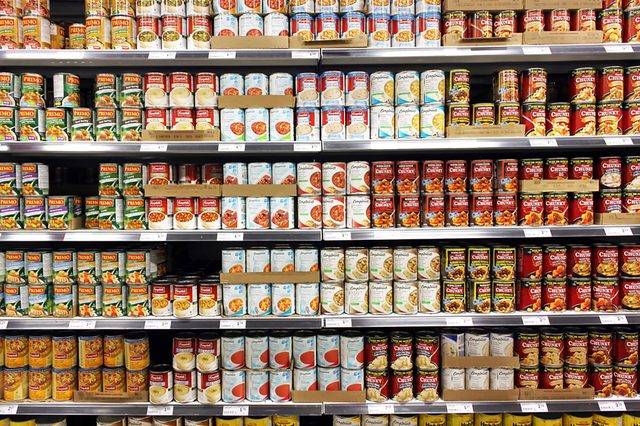
Buy store brands
It’s tempting to buy name brands you’ve seen in ads, but you’ll pay for that prestige. Instead, go for store brands, many of which are nearly identical to the name-brand versions. “Most large food stores, even Whole Foods, now produce their own brands at a more affordable price than the name-brand options,” says health coach Beth Romanski. “For example, the store-brand coconut milk at my local grocery store is $1.99 versus $3.99 for a name-brand version. It may not seem like much, but every little bit adds up.”
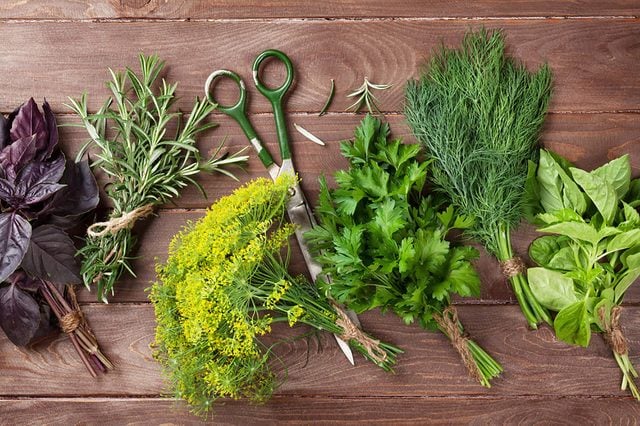
Grow your own
Eating is practically free if you can grow food in your own backyard. “If you’re new to gardening or don’t think you have a green thumb, start off with a few simple herbs,” says health and wellness expert Caleb Backe. “Herbs are generally pretty resilient and taste way better when they’re freshly picked. Once you get the hang of it, plant some of your favourite foods like tomatoes, eggplants, zucchini, peppers, and berries.” Here’s how to grow indoor herbs and veggies in any home.

Get cash-back
Use websites like eBates.com to get money back on your groceries. “Ebates is a great website, and if you shop at outlets like Jet and Vitacost, you can get a percentage back on what you spend,” says registered dietitian Jeanette Kimszal. “Certain times of year there will also be double cashback. Over the holiday season, I got 9 percent back on my Vitacost order.”
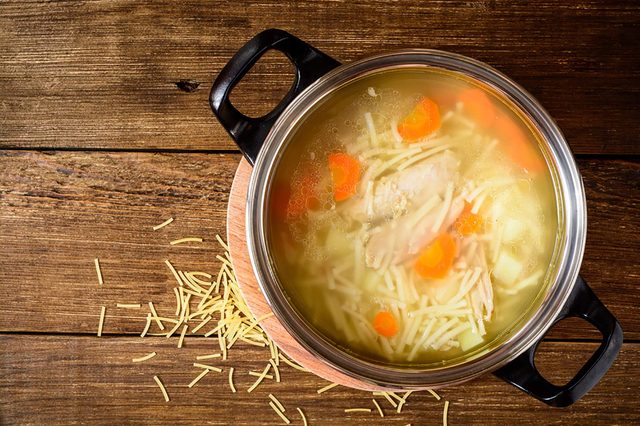
Give new life to leftovers
If you have leftover food that you’re sick of eating and don’t want to waste, switch it up, and turn it into a soup. “Some canned or frozen broth is your best friend here,” says nutritionist Keith Ayoob, associate clinical professor at the Albert Einstein College of Medicine in New York City. “Or make your own. It takes some time, but it’s passive time, so you just let it simmer in the evening while you watch TV or do something else.” (For more ideas, check out what we love to do with Thanksgiving leftovers.)

Make DIY cleansers
Instead of buying heavy-duty cleaning products that likely contain hazardous chemicals or splurging on special green brands, make your own natural cleaning solutions. “Try making your own non-toxic cleaners with products you already have in your kitchen,” says healthy lifestyle expert Mary Black. “One of the easiest ways to be healthy is to rid your house of those nasty poisons.” (But be sure you know about the household products that kill coronavirus.)

Order online
In today’s world, certain products are just cheaper online. “Amazon or Thrive Market are great places to find some healthy staples at a better price due to the merchants’ ability to source vendors,” says Romanski.

Pass up packaged goods
Ready-made packaged foods are tempting because of their convenience, but they can also hike up the cost of your grocery bill. “For example, you could make kale or beet chips, crackers, riced cauliflower, or even kombucha on your own—even if you aren’t someone who particularly likes cooking—at a fraction of the price of the trendy packaging,” says Romanski. At the very least, you can do simple tasks like peel and chop your own carrots instead of buying bags of minis. (But here are the packaged foods that can help you lose weight.)

Connect with nature
Nature requires no down payment and no monthly membership, so go ahead and take advantage. Connecting with nature might simply look like taking a walk around the block or sitting on your stoop for a few minutes. “Go for a walk during your lunch break, do yoga outside or in the garden, and plan jogging and hiking adventures on the weekends,” says self-care coach Zakiyya Rosebelle. Doing outdoor activities is not only a free or inexpensive way to get exercise, but spending time outdoors can help improve your overall well being and mood. (Learn the benefits of a 15-minute walk.)
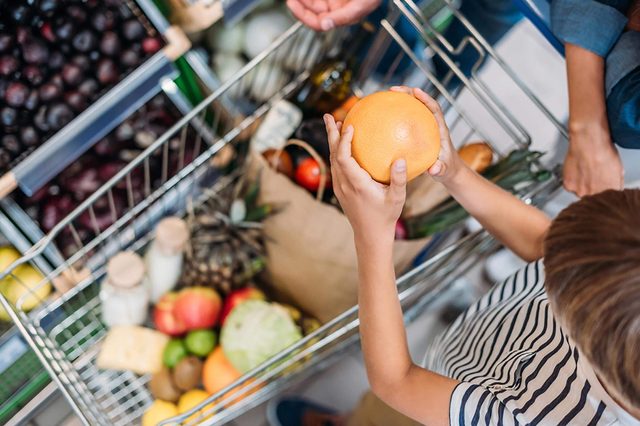
Eat before you shop
It’s true that shopping on an empty stomach can lead to an empty wallet. “You’ll be far more tempted to buy random, expensive foods that catch your fancy if you’re hungry,” says health and fitness blogger Alice Williams. “Write your grocery needs on a piece of paper or in the notes section of your phone, and try not to stray from that list.”

Check for discounts
If your job or school has a no-cost fitness center or a fitness reimbursement plan, take full advantage. “Carefully read through the benefits you are offered through Human Resources,” says Nina Watson, a fitness expert, and nationally recognized diagnostic radiologist. “Many companies offer discounted rates for memberships at certain gyms. Some companies even offer rewards or incentives for participating.”
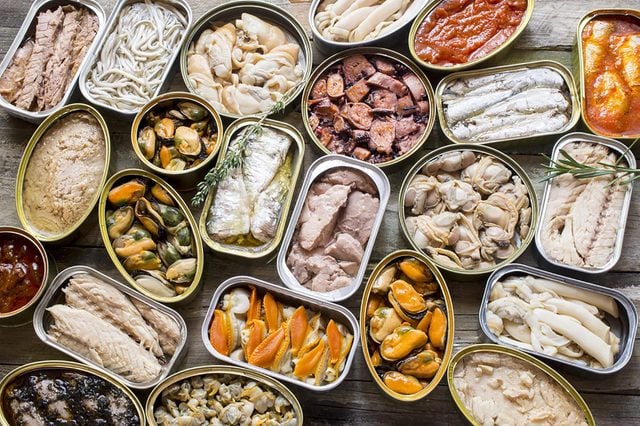
Don’t discount jars and cans
We’ve been led to believe that fresh is always best, but jarred and canned foods are affordable, healthy options that are available in any season and can last a long time. “Canned produce such as corn, hearts of palm, and beets are great ways to liven up a salad or side dish,” says Gillespie. “Just rinse them with water to remove the extra salt, and you’re good to go.” (Here are the canned foods nutritionists actually buy.)

Try big box stores
Discounts at big box stores like Costco can really add up over time, and because the stores move so much merchandise, it’s often fresher than what you’ll find at supermarkets. “Costco is a great resource for buying fresh, organic, produce, and meats in bulk for meal prep,” says Lindsey Ditchfield, Director of Employee Wellness and Company Culture at GeoLinks.
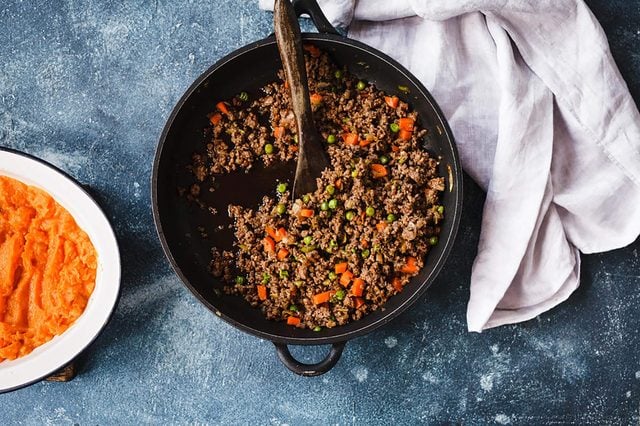
Use a slow cooker
Slow cookers are inexpensive, and they can help you make affordable meals. “Because slow cooker recipes require you to cook ingredients for longer, you can buy cheaper, tougher cuts of meat,” says Williams. You can also make a huge batch at once. “You’ll have a ton of food to freeze and have for leftovers throughout the week.” Here are our favourite slow cooker recipes.
Next, learn about the healthy habits to start today to keep your brain healthy.
